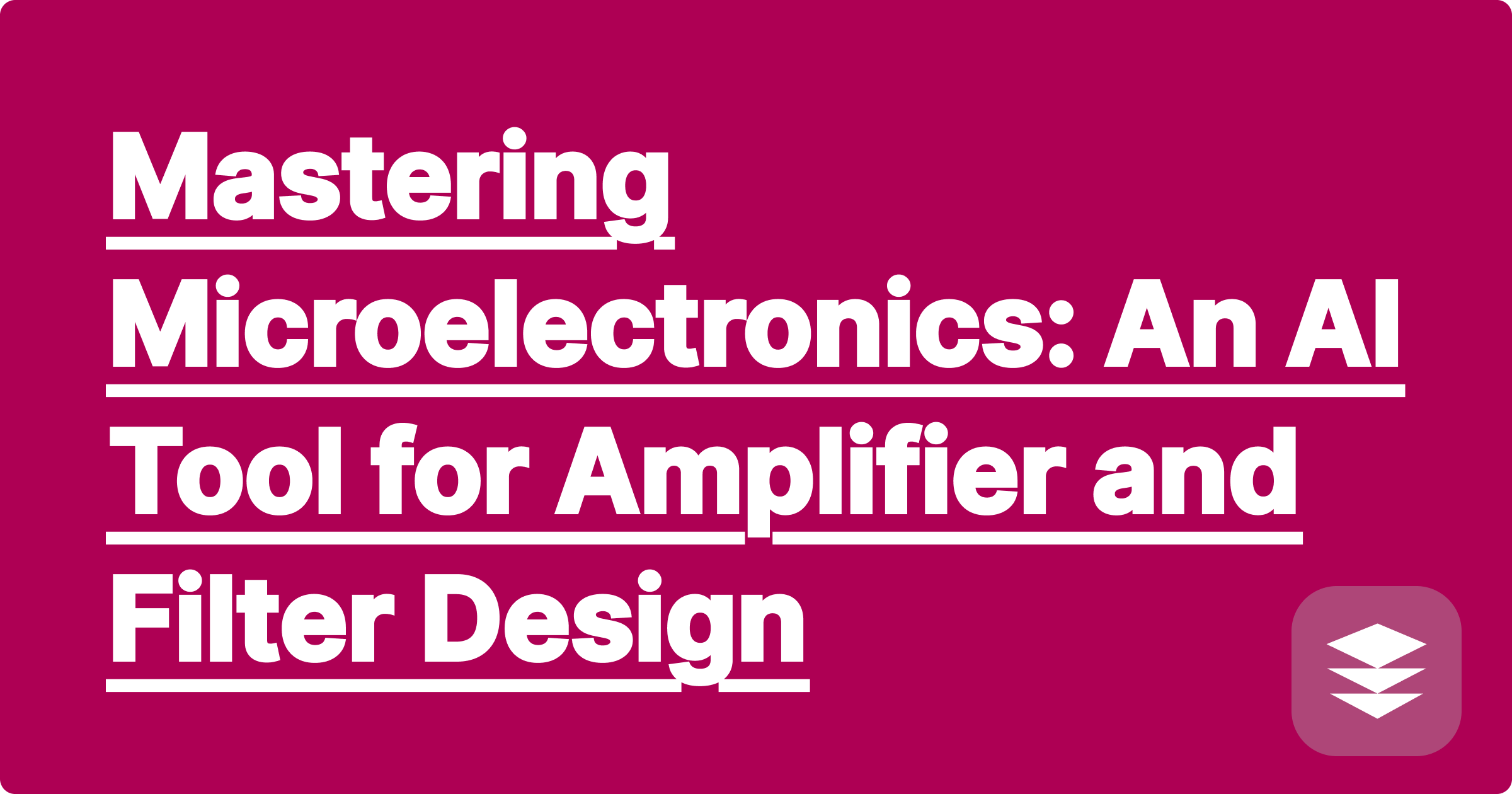
Welcome to Microelectronics (or Analog Circuit Design), the course where the ideal, perfect world of basic circuit theory meets the complex, messy reality of transistors and operational amplifiers (op-amps). This course is all about designing circuits that amplify, filter, and shape analog signals, and it requires a deep understanding of both device physics and complex circuit analysis.
The heart of the course often revolves around the op-amp. You'll be asked to design inverting amplifiers, non-inverting amplifiers, integrators, differentiators, and active filters. Each configuration has a unique transfer function (the equation that describes its gain and phase shift as a function of frequency), and deriving this function can be a marathon of tedious Kirchhoff's Current Law (KCL) analysis in the frequency domain.
This is where you need more than just a calculator. You need an op-amp circuit solver. An AI assistant like GPAI Solver can provide critical microelectronics circuit design help, automating the complex math so you can focus on the design and intuition.
Why is analyzing op-amp circuits so difficult?
This is the AI's first superpower. You can provide a diagram of your circuit and ask the AI to do the heavy lifting.
This automates the most mathematically intensive part of the homework, allowing you to verify your own work or get unstuck when you're lost in the algebra.
Once you have the transfer function, you need to understand what it means. A Bode plot is the best way to do this.
Your Prompt: "Given the transfer function H(s) = 1 / (s² + s + 1), generate a Bode plot showing the magnitude and phase response as a function of frequency."
The GPAI Solver can instantly generate a professional-looking Bode plot. This op-amp circuit solver becomes a visualizer, showing you:
[Image: A clean, AI-generated Bode plot with two graphs. The top graph shows Magnitude (dB) vs. Frequency (rad/s), and the bottom graph shows Phase (degrees) vs. Frequency (rad/s). Alt-text: An AI providing microelectronics circuit design help by generating a Bode plot.]
The AI becomes a powerful design tool when you use it for comparison.
This allows you to build design intuition much faster than by doing each calculation manually.
Use GPAI Cheatsheet to build a reference guide for your microelectronics course. Every time you analyze a new circuit—an inverting amplifier, a high-pass filter, an integrator—save the circuit diagram, its transfer function, and its Bode plot as a "Knowledge Block." By the final exam, you will have a personal, visual library of all the core building blocks of analog circuit design.
[Stop getting lost in complex algebra. Try GPAI Solver today. Get instant help with transfer functions and Bode plots for your toughest microelectronics homework. Sign up now for free credits.]
Circuit Analysis Made Simple: An AI Assistant for Nodal and Mesh Analysis
Understanding Electromagnetics: How AI Can Visualize Fields and Waves
Digital Logic Design: From Truth Tables to Karnaugh Maps with AI
Signals and Systems: How AI Can Help You with Fourier and Laplace Transforms
Your Guide to Semiconductor Physics: How AI Simplifies Band Diagrams
How to Write Verilog or VHDL Code Faster with an AI Assistant
Mastering Microelectronics: An AI Tool for Amplifier and Filter Design
The ECE Student's Ultimate Cheatsheet: Combining Circuits, Signals, and Code
Can AI Help Me with My PSpice / LTspice Simulation?
How to Prepare for the FE Electrical and Computer Exam with AI